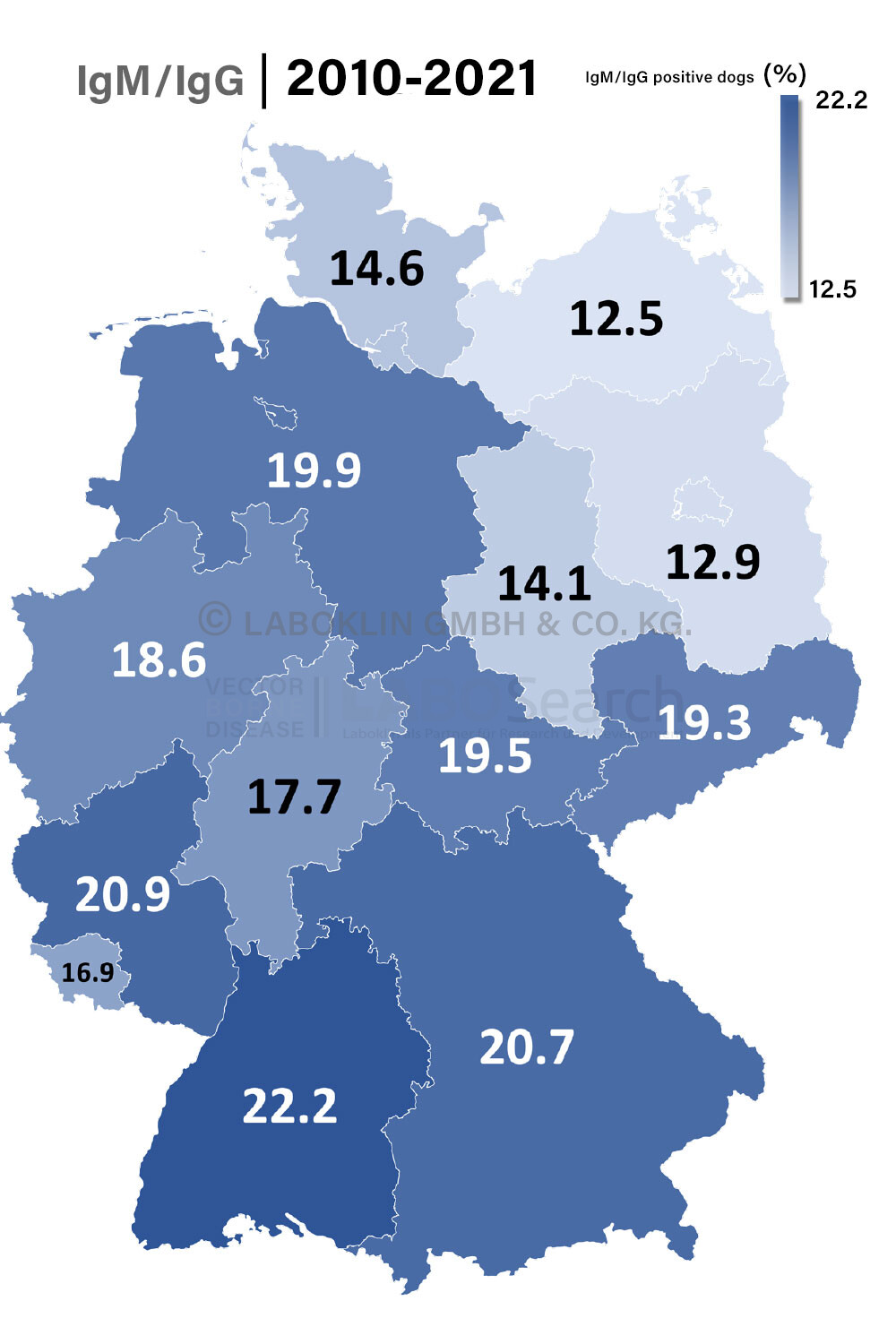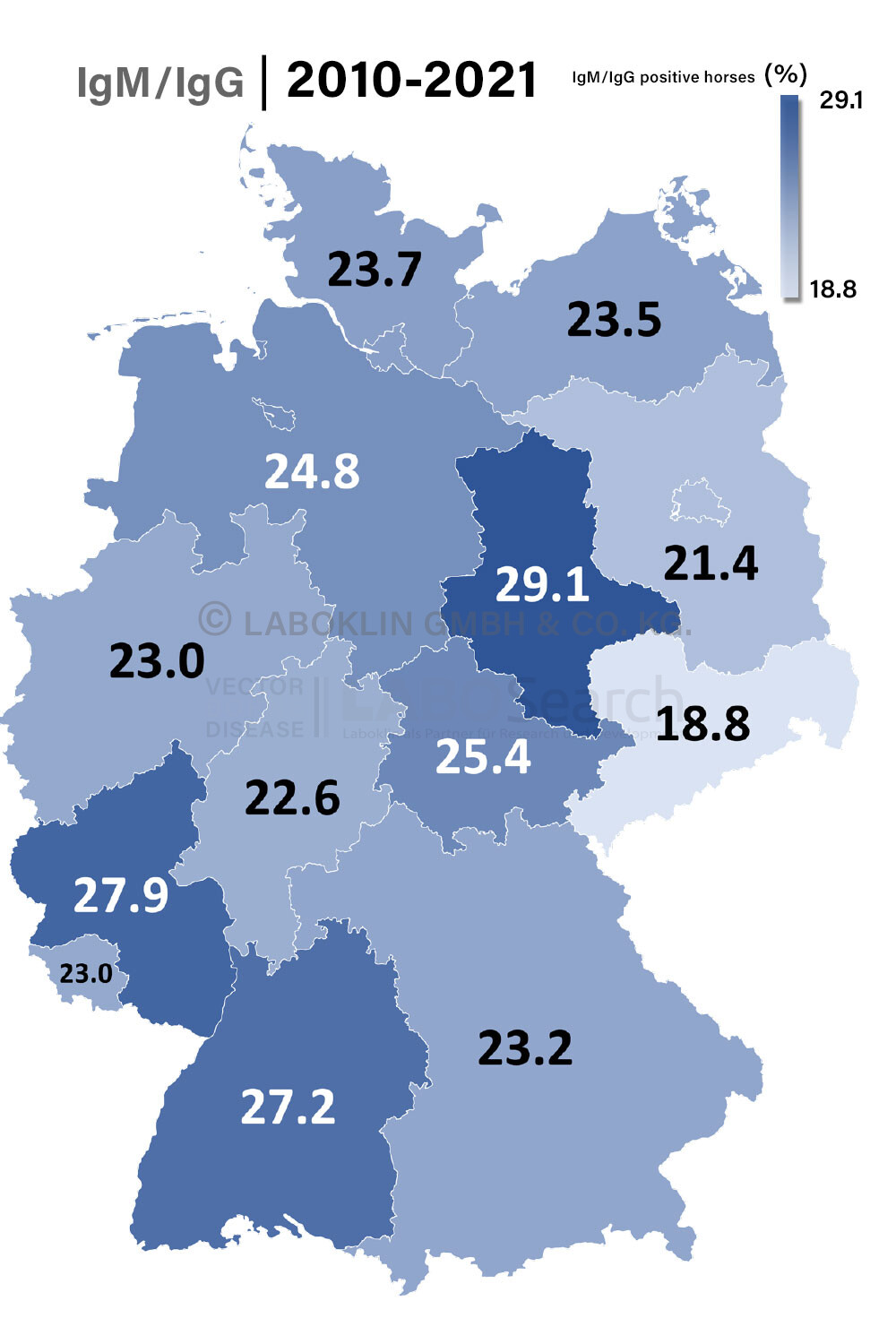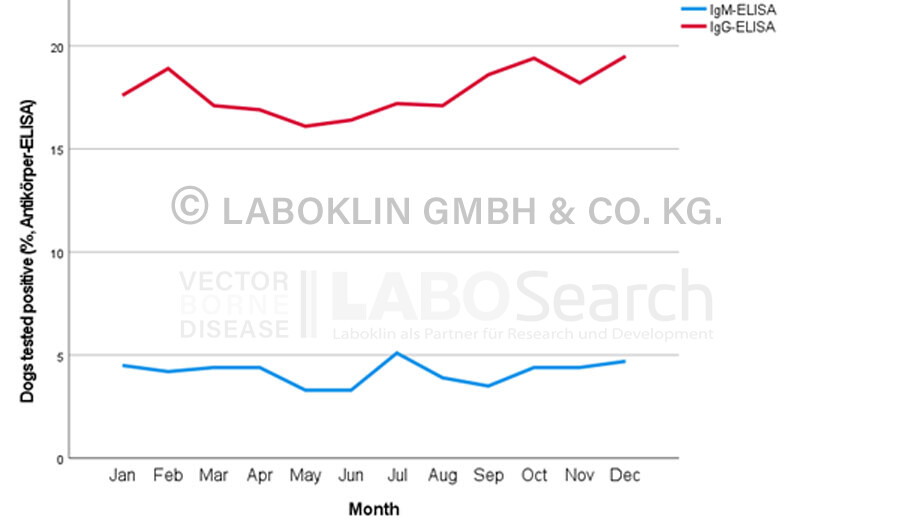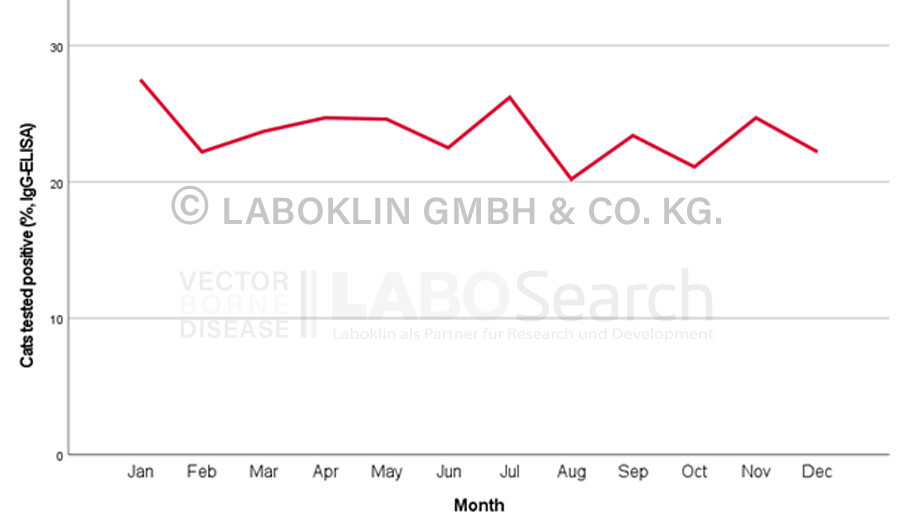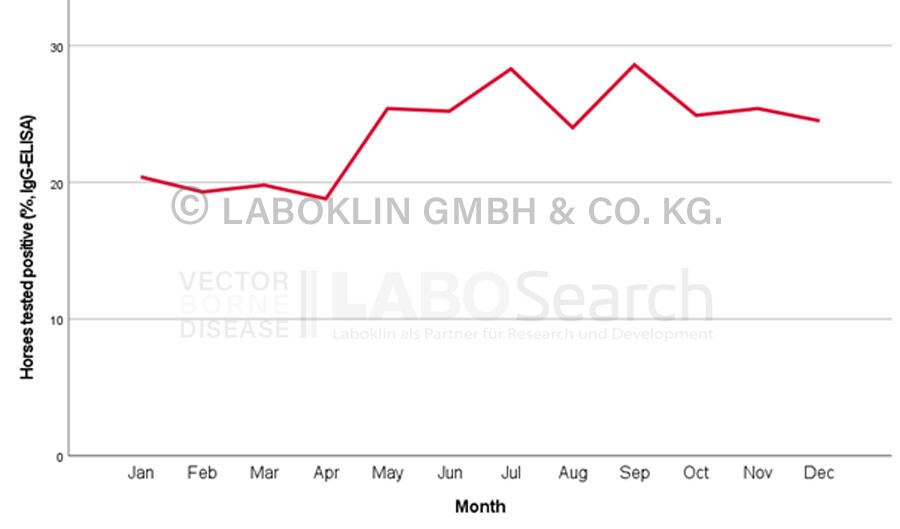- Borreliosis in dogs, cats, horses, cattle and wildlife
- bacterial infectious disease
- Vector: ticks of the Ixodes species
- Pathogen reservoir in wildlife (dogs and cats are not seen as potential reservoirs)
- Zoonotic disease (Lyme disease in humans)
- Direct detection methods
- PCR (positive result indicative for acute infection, golden standard: biopsy of the joint capsule)
- Indirect detection methods (positive result indicative for pathogen contact in the past, paired serum samples necessary for detection of potential infection)
- IgM-/IgG-ELISA
- Westernblot wirh differentiation between vaccination titers and antibodies due to pathogen contact
- Dog: unspecific clinical signs
- Horses: Discussion about the importance of Borrelia as a potential pathogen
- Cats: most often subclinical
- In contrast to human medicine, erythema migrans is rare in veterinary medicine
Dog (2010 – 2023, N> 70.000)
Timeframe | IgM-ELISA | IgG-ELISA |
2022-2023 | 5.0% | 13.3% |
2018-2021 | 7.2% | 16.8% |
2014-2017 | 4.0% | 17.7% |
2010-2013 | 1.9% | 17.9% |
Cat (2010 – 2023, N> 1.000)
Timeframe | IgM-ELISA | IgG-ELISA |
2022-2023 | 0.4% | 26.8% |
2018-2021 | 0% | 32.9% |
2014-2017 | 0% | 27.8% |
2010-2013 | 0% | 13.6% |
HORSE (2010 – 2023, N > 10.000)
Timeframe | IgM-ELISA | IgG-ELISA |
2022-2023 | 0.5% | 32.6% |
2018-2021 | 0.1% | 31.6% |
2014-2017 | 0.1% | 24.7% |
2010-2013 | 0% | 16.9% |


